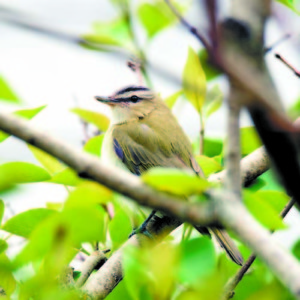Earth Notes: Experiencing the ‘Breeding Bird Atlas’
By Mary Jewett
In June, Jean Preis told you about the Maine Breeding Bird Atlas project. For those of you who didn’t read her piece, or forgot the information, here is a brief rundown. The Atlas is a five-year project to update our knowledge about birds that are breeding in Maine. A similar project was done a lifetime ago (my lifetime) and the state is seeking more information to compare to this baseline. The Maine Department of Inland Fisheries and Wildlife is working with hundreds of volunteers around the state to gather as much data as possible.
Instead of focusing on the logistics of the project I want to share my personal experiences with the Atlas. We are at the very beginning stages of the project but I have already made some great discoveries.
Spring has always been special to me, with the migrating birds and amphibians. Now this year I have my breeding bird block to occupy my energies. I adopted a block in Lovell and I have visited several times this spring and summer.
In the beginning, the signs of breeding included many different species singing their hearts out. Black-throated blue warblers were especially vocal, as well as great-crested flycatchers. Having several different males singing in one place is a strong indicator that they will nest there. I dutifully reported all singing male birds to the Atlas coordinators. There is a website, an offshoot of eBird, where volunteers can submit their observations.
During a visit in early June I witnessed a black-capped chickadee excavating a woodpecker hole in a dead tree. Chickadees are cavity nesters and I knew that this little bird was getting ready for nesting season. On the same trip I also saw a wood duck flying into the forest. Wood ducks are amazing to me because they are also cavity nesters and they make their nests high up in trees, up to 65 feet! When the babies hatch they must jump (they can’t fly yet) from the tree and follow their mother to the water.
On a more recent visit, the woods were very quiet. The constant singing of the males had subsided now that nesting was underway. Many eggs have hatched and the occasional sound of begging baby birds can be heard in the woods. While I have a decent ear for songbirds, it is impossible for me to tell one baby bird from another. So I look carefully to try and spot an adult coming to answer the begging calls. I saw a red-eyed vireo carrying what seemed to be a medium sized caterpillar. Male red-eyed vireos spend much of the summer continuing to make a racket in the forest. Their short, musical song is repeated over and over and is one of the only bird songs you will hear throughout the length of the summer. They usually spend their time high up in the trees so it is always fun to spot one.
I have only been birding, in a serious way, for about a decade. I have had the pleasure of traveling solely for the purpose of finding and photographing birds. While increasing my “life list†is always fun, there is something special about visiting the same place close to home and observing changes over time. The next time I go I will visit the chickadee nest to see how they fared. I am curious to see if any wood ducklings made it to the pond nearby. Over the next five years I will continue my observations and report them to the state of Maine. Eventually we will have a decent record of what birds are breeding in Maine. We can compare this to the last Atlas (completed in 1983) and see how bird populations have changed over the decades.


